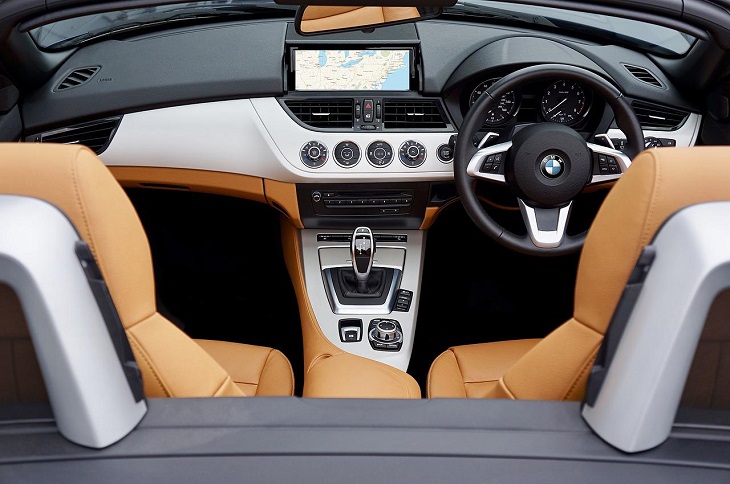Today we’re here to talk about how disabled drivers can safely use satellite navigation in their cars without it becoming a distraction.
What Is Satellite Navigation?
Satellite navigation (commonly known as “sat nav”) is a system that uses satellites to provide positioning and navigation information. Sat nav is commonly used by drivers to determine their geographic location in terms of longitude, latitude, altitude, and elevation, and to provide directions to their chosen destination.
Sat nav systems have largely replaced maps, and even signposts, as the main means by which drivers find their way to their chosen destination.
Different Types Of Sat Nav
Vehicles tend to have one of two possible types of satellite navigation system onboard:
- Built-in – When a sat nav system is built into the vehicle’s infotainment system.
- Freestanding – When the sat nav is on a smartphone or dedicated sat nav device and is attached to the vehicle’s dashboard or windscreen.

How Do You Use A Sat Nav?
Using a satellite navigation system in your vehicle is very straightforward. All you need to do is type in your desired destination and press “search” or “enter”. The sat nav will find the destination and plan the quickest possible route from your current location. It will then provide you directions to your chosen destination.
How Can Satellite Navigation Be Useful For Disabled Drivers?
Satellite navigation is useful for disabled drivers because:
- It does away with the need for drivers to consult a map or smartphone while driving.
- It informs drivers of any traffic congestion, road works, accidents, or delays on their route.
- It always provides drivers with the quickest possible route to their destination.
- It allows drivers to concentrate on driving safely without having to multitask.
- It prevents drivers from getting lost.
Can You Use Navigation While Driving?
Yes, you can safely use sat nav while driving. Sat navs should be positioned in your line of sight while driving, either mounted on the dashboard or incorporated into the vehicle’s infotainment system. You need to be able to view the sat nav without having to look away from the road. Sat navs also have a digital voice that tells you directions as you drive.
Can I Touch My Sat Nav While Driving?
The best way to adjust your sat nav is to pull over, stop your vehicle safely, and then make adjustments if necessary.
Where Is The Best Place To Put Your Sat Nav?
The best place to put your sat nav is in your line of vision, mounted to the dashboard or windshield.
How Disabled Drivers Can Safely Use Satellite Navigation
Here are some tips that will allow you to use your satellite navigation system safely:
- Mount your sat nav in a place where you can easily see it without having to take your eyes off the road.
- Type your route into the sat nav system before you begin driving.
- Make sure the volume of your sat nav is loud enough for you to hear clearly.
- Do not position your sat nav in a location that hampers your view of the road or your dashboard instruments.
- If you need to make adjustments to your sat nav, pull over and park your vehicle before touching the device.

How Do You Get A Disability Parking Permit?
The first step in the process of getting a disability parking permit is to have a medical consultation with a state-licensed medical professional. The quickest and easiest way to do this is to arrange a video consultation through an online telemedicine clinic.
Once the medical professional verifies your suitability to use disabled parking, they will sign a disabled parking application form and email it to you within 24 hours. You must then complete the form and submit it to your local disabled parking authorities.
What Types Of Disability Parking Permits Are Available?
The following different types of disability parking permits are available in most US states:
- Permanent disability parking placard
- Temporary disability parking placard
- Disabled parking license plates
- Disabled parking license plates for motorcycles
- Agency disability parking placard
- Disabled Veterans license plate
- Free parking sticker (only available in some states)
What Are The Qualifying Conditions For A Disability Parking Permit?
You will qualify for a disability parking permit if you are disabled in one or more of the following ways:
- You cannot walk 200 feet without needing to stop to rest
- You cannot walk without the use of or assistance from a brace, cane, crutch, another person, prosthetic device, wheelchair, or other assistive devices
- You have lung disease that restricts you to such an extent that forced (respiratory) expiratory volume for one liter or the arterial oxygen tension is less than 60 MM/HG on room air at rest
- You have a heart condition which is classified in severity as Class III or Class IV, according to the standards set by the American Heart Association
- Your ability to walk is severely limited due to an arthritic, neurological, or orthopedic condition
- You use portable oxygen
- You are legally blind
Featured image by Axel Antas-Bergkvist on Unsplash
